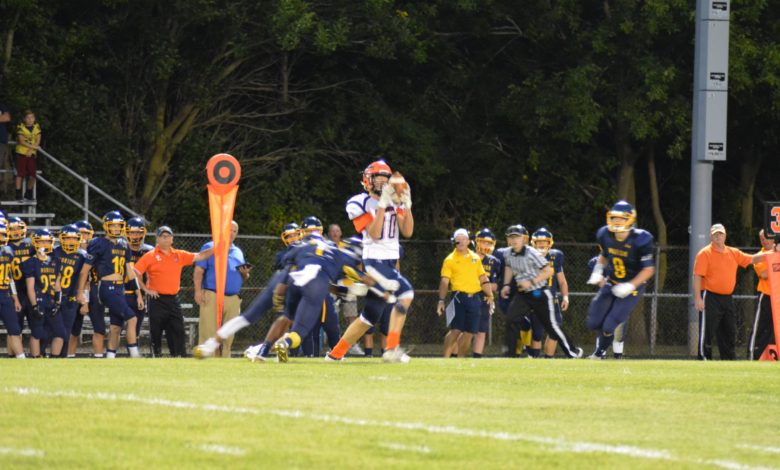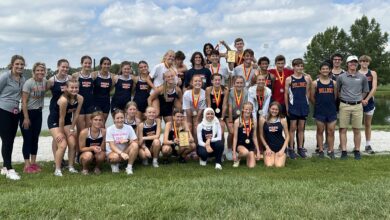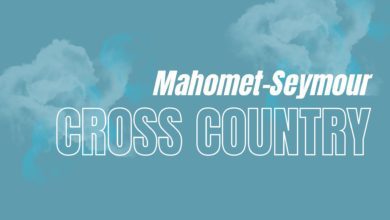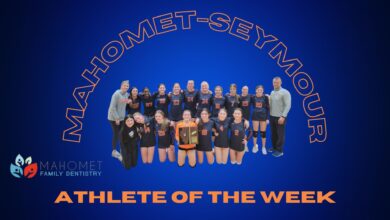Athletic Directors: Any decision is better than no decision

By FRED KRONER
Oakwood High School athletic director John Odle believes there comes a time when any decision is better than no decision.
That time didn’t arrive on Wednesday as the IHSA Board of Directors met, but didn’t provide any further guidance on when – or if or which – high school sports will resume.
IHSA sports have officially been on hold since Nov. 20, though the last sanctioned IHSA event was cross-country sectionals, which took place on Oct. 31.
Those who were expecting clarifications on Wednesday were disappointed. Mahomet-Seymour High School athletic director Matt Hensley said the end result, however, was the continuation of a recurrent pattern.
“People get worked up about these meetings,” Hensley said, “but usually, it is much ado about nothing.”
The main outcome on Wednesday was that the IHSA scheduled another special board meeting for Jan. 27, at which time some sort of timetable or announcement is expected.
Odle believes athletes and coaches have been in limbo long enough.
“It is paralysis by analysis,” Odle said. “They keep thinking that the situation will change shortly or that they will get more information, so they delay the decision.
“The time keeps going by and we are still waiting. Sometimes you need to take the information you have and make a decision before it is too late.
“It is becoming increasingly frustrating for the ADs, coaches and the athletes. It has resulted in some of the athletes seeking alternative places to play, which they would have done regardless of the IHSA’s decision to cancel a season. I look at facts and try to keep emotion out of the decision process.”
After Wednesday’s meeting, the IHSA announced that contact days could start for sports which are not in the high-risk categories. That decision still shuts out basketball and football.
While no formal start-up announcement for competition has been made by the state association, Hensley said that in itself is significant.
“At this point, we are painting ourselves into a decision-making corner,” Hensley said. “We’re running out of days and running out of options.
“January 27th is about as close to a drop-dead date as we’ve had.”
The impact that COVID-19 has had during the past 10 months has gone beyond the possibility of getting the virus and an altered classroom schedule.
Odle recognizes that it is a difficult path to navigate, but said no one benefits by continually being in a state of uncertainty.
“I was a medical planner for 20 years in the Air Force, so I understand both the medical aspects of the spread of contagious diseases and planning massive events,” Odle said. “It is a tough situation for everyone involved, but moving forward with a plan that is permanent is as important to our coaches’ and athletes’ social emotional health as playing the sport.
“Not knowing what the schedule is can be as damaging emotionally as cancelling a season. At least when the season is cancelled, you can deal with your emotions and move on to the next event or activity.
“Right now, we are in a continuing hold pattern which is very difficult on everyone.”
He is no longer optimistic about which sports will be allowed during the remainder of the 2020-21 school year.
“I don’t foresee anything but low-risk sports being played until summer,” Odle said. “I would be ecstatic if we could play all sports. Unfortunately, the facts are stacked against us.
“If we get the green light on Jan 27th, it would be too late for basketball season with the current schedule.”
When the ‘go’ signal is given, the first order of business won’t be the games. There will need to be some sort of preseason for conditioning and preparation, even if it is modified from the traditional two weeks of practice before games can be played.
Under the original IHSA model, the basketball seasons for boys and girls were scheduled to end on Feb. 13. For basketball to now get started with any kind of a meaningful schedule, it would mean either lengthening the season or moving it to another part of the school year, when it would then directly conflict with other planned sports.
From the next IHSA meeting on Jan. 27, it is just 17 days until the winter sports season (which was supposed to begin on Nov. 30) is currently slated to end.
Whatever choices are made would put ADs in a bind.
“It would require altering other season schedules and that will take time to schedule games and get officials,” Odle said.
However, Odle is prepared to step up when approval is granted.
“I want the student-athletes to have every opportunity to play sports and do extracurricular activities,” he said. “As soon as IDPH says we are good to play, Oakwood will be ready to go.
“We will make it happen as risk-free as possible.”
Hensley credits the IHSA for its resolve to try not to eliminate sports from its school-year lineup.
“I applaud the fact the IHSA has sent a consistent message about trying to conduct all of the sports,” Hensley said.
Neither Odle nor his AD counterpart at Heritage, Lori Archer, were surprised that the IHSA decided on Wednesday to keep sports on hold without offering more of a firm timeline.
“I had the mindset that we were probably going to be delayed again,” Archer said. “I certainly had hopes that there would be a more concrete decision made or more direction given, but that was just wishful thinking.”
Archer agrees that the indecisions are taking a toll.
“The uncertainty has been the hardest part for everyone involved, the athletic directors, the coaches, the athletes, and the parents/fans,” she said.
Knowing how small the window of opportunity is for the IHSA to get all remaining sports worked in prior to the end of June leaves Archer doubtful about the likelihood of it occurring.
“I fear the longer this goes on and the more delays we have, the harder it will be to actually get a basketball season in,” she said. “We are to the point where it’s going to be very difficult to squeeze a season in before the next sports season is tentatively scheduled to start.
“Even if the basketball team is allowed contact days prior to basketball season officially starting, I still feel like they will need seven to 10 days of full practice before they are ready to start games.
“The longer the season is pushed back, the harder it’s going to be to get the season started/completed.”
Hensley believes the time needed to practice before games are played will be more important this year than in the past.
“There is value to acclimating before you fire back up,” he said. “The only thing we’re allowed right now is 1-on-1 workouts.
“Some kids are doing things on their own volition, but others have been more sedentary and would need the acclimation.”
Archer, however, is not totally disheartened.
“If anything positive came out of the meeting, it would be that there is still some chance for seasons to take place, and the possibility of contact days beginning again,” she said. “The delay, or lack of seasons so far, has caused tremendous mental and emotional strain on both the athletes and coaches.
“If seasons can’t begin, at least if they are allowed contact days, it will give the athletes the chance to get together as a team, begin conditioning so they are ready when and if their season begins, resume the social relationships that they have missed out on, and it will provide them something positive to focus on.”
Until – or unless – told otherwise, Archer will retain some degree of optimism.
“I hope for the sake of all student-athletes, the IHSA/IDPH and the Governor can come up with a way to provide those athletes the opportunity to have a season(s), even if it is a shortened season and looks much different than anything we have seen before,” she said.
Hensley hopes if the point is reached where some sports must be placed on the chopping block for this school year, that decisions will be made based on what transpired at the end of the 2019-20 school year.
All outdoor spring sports last year were canceled.
“I hope that the memory of the kids who lost their seasons last year would be part of the decision,” Hensley said.
Though logic dictates that decisions will be finalized and announced following the Jan. 27 IHSA board meeting, St. Joseph-Ogden athletic director Justin Franzen isn’t ready to make any predictions.
“It is hard to say what will happen at the next IHSA meeting,” Franzen said.
Through the first semester of the current school year, the only IHSA sports to have had a season are cross-country for boys and girls, golf for boys and girls, tennis for girls and swimming for girls.
Each of those sports had an abbreviated postseason without a chance to win a state championship.
In a typical school year, the IHSA would sponsor 15 sports for boys and 16 for girls. That total doesn’t include bass fishing, which is listed as an activity rather than as a sport.
Though the IHSA gave the go-ahead for contact days to resume, Hensley pointed out that isn’t possible for area schools “not as long as Tier 3 mitigations are in place.”
That designation could change on Friday for some of the state’s regions which meet that benchmark. Hensley said that creates another set of issues.
“Seven of the 11 regions will be out of Tier 3, but the playing field will not be level at that point in time (for the remaining four regions),” Hensley said.
While some will celebrate a return to Tier 2, Hensley noted that high-risk sports – such as football and basketball – will continue to be impacted.
“Even at Tier 2, the only thing they can do is intrasquad scrimmages,” he said.
Whether high school football happens this school year in Illinois is yet to be determined, but the current timeline of a Feb. 15 date to start practice looks unrealistic, according to Hensley.
“I don’t want to be the bearer of gloom and doom, but the reality of starting football in four weeks, I don’t know if I’m that optimistic,” he said.
Even when sports return, Hensley expects there will be concerns.
“If things improve to the point you can start practicing basketball, or playing basketball, then the difficult decisions change levels,” Hensley said. “Then, it will be a local decision.
“Some schools that are all-remote might still say it’s not safe to play.”
Under previously announced IHSA guidelines, schools would be required to play opponents within their region this school year. If some districts are not on board about returning to action, other districts could face a limited number of possible schools to play.
Prior to the New Year, officials from the IHSA and IDPH met. No agreements were reached, but Hensley said, “I see that as a positive first step, but none of us know how long the journey is.
“No one knows what the mile marker is.”
For now, uncertainty and hope remain the operative words for anyone associated with high school athletics in the state.





